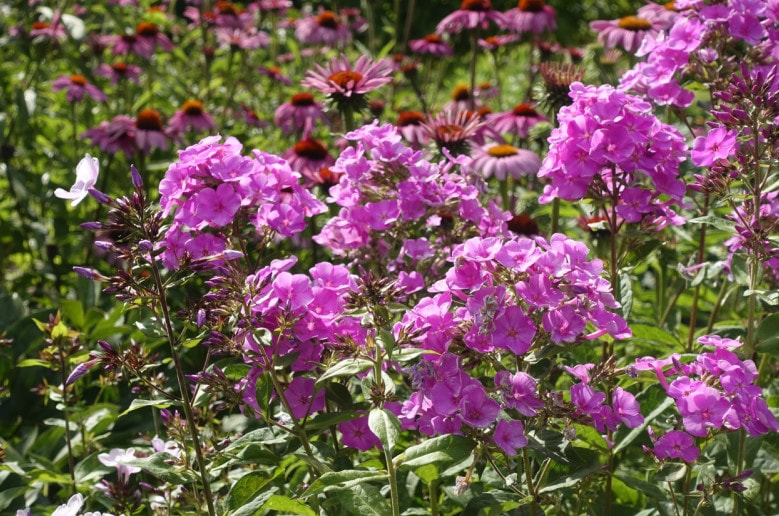|
Popular with pollinators, Phlox is a wide-ranging North American native perennial and a common fixture in woodland, prairie, and meadow landscapes from Florida and Quebec to Alaska. Phlox is a genus with a multitude of species, heights, bloom times, and garden applications. A tubular flower with five petals is common with colors between white, pink, magenta, purple, and blue across the genus, as well as some species showing notable orange or red coloration. Through all of the diversity, Phlox can be loosely grouped into two types: spring bloomers and summer bloomers.
Spring Bloomers Phlox subulata (Creeping Phlox, Moss Pinks) and other early-spring blooming species are low-growing, ground-hugging plants. Typically native to rocky, well-drained environments, when put in a garden without restriction, they become carpets of color, tending to spread as ground covers. Summer Bloomers Most first think of Tall Garden Phlox, a clump-forming perennial that blooms in midsummer and is among the tallest of this species with perfectly formed large, rounded flower panicles that top each stem. Newer summer-blooming varieties tend to bloom a bit earlier, rebloom after the first flowers when trimmed back, have a more mounded shape and a stoloniferous habit. Gardening Tips:
Credit to https://ngb.org/year-of-the-phlox/ Contributed by: Vicki Gee-Treft
0 Comments
Leave a Reply. |
|
| North Country MGV | gARDEN bLOGS |
Location |
|

 RSS Feed
RSS Feed